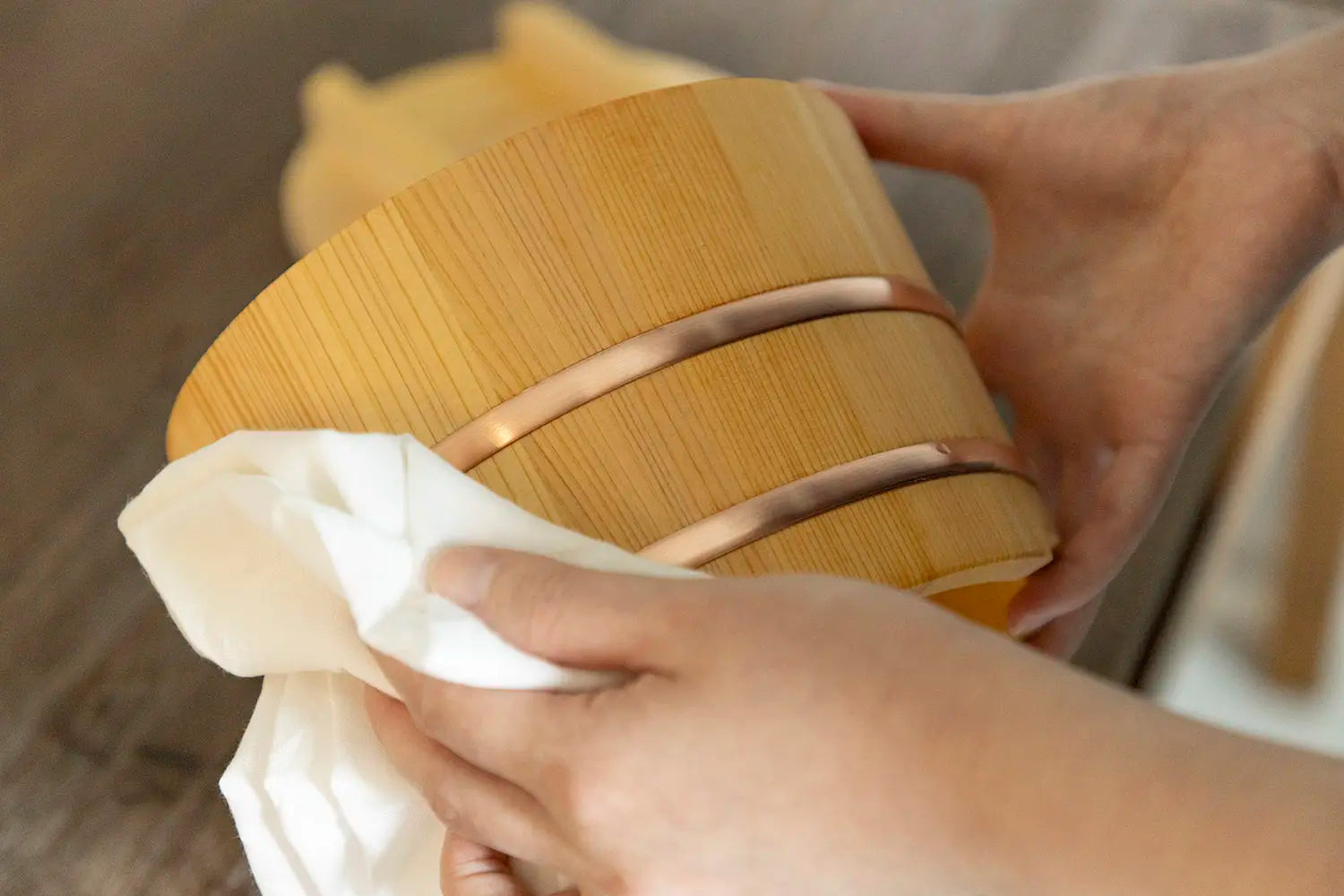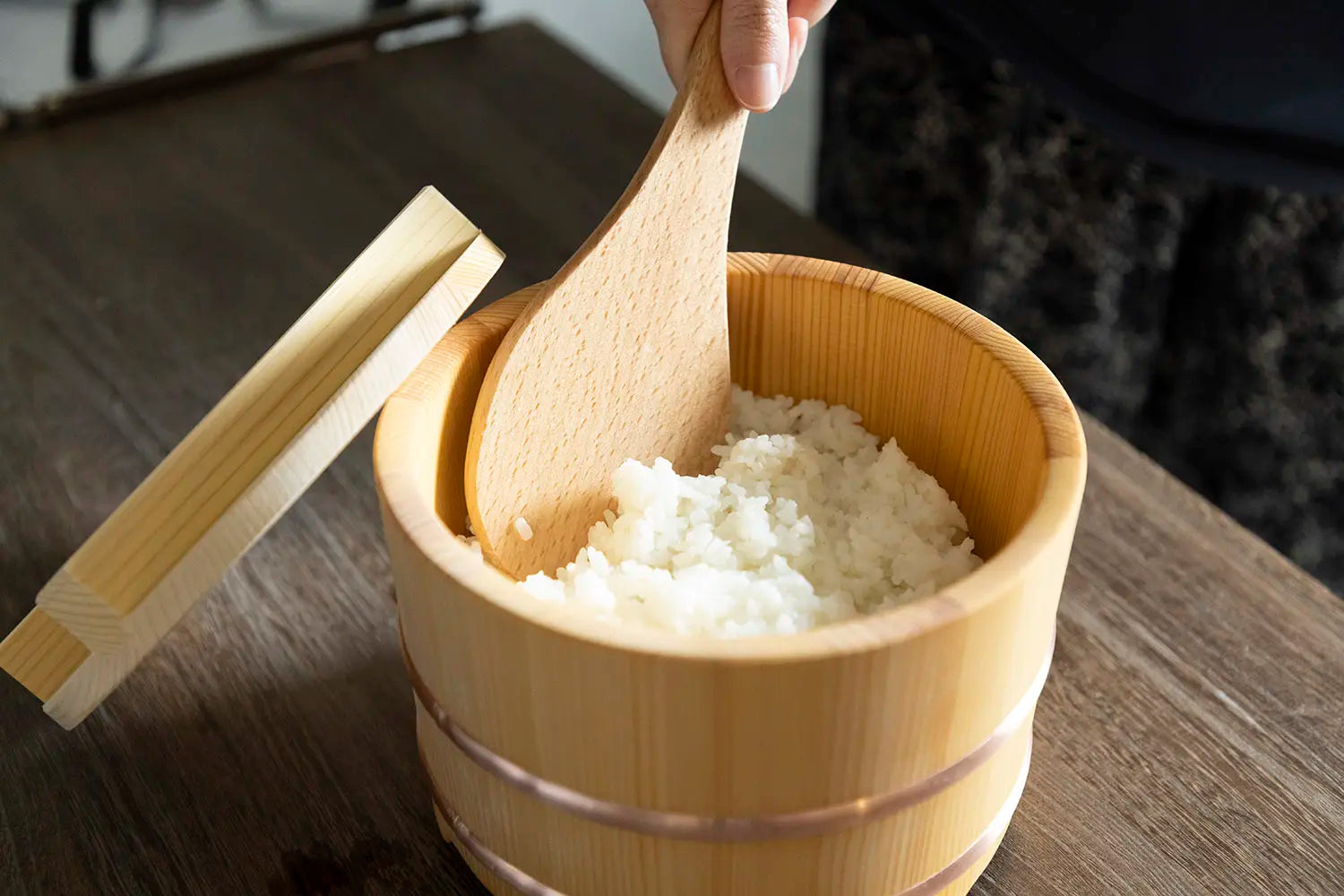The products we used:
What Does an Ohitsu Do?

Ohitsu are small bowls made of cedar wood used for storing rice. When used properly, they add a sweet scent to the rice while keeping it nice and moist. They are the secret weapon of extra-handsome rice-enjoyers.
Edobitsu vs. Nosebitsu

There are two kinds of ohitsu: edobitsu and nosebitsu (pronounced no-se-beetsoo). The difference is aesthetic, like the difference between oiling or not oiling your hair before a date with that special lady you met at the local seven eleven. An edobitsu uses a lid with a lip around the circumference. A nosebitsu has a flat lid. Edobitsu are a bit fancier, while nosebitsu are simple. Otherwise, they are functionally equivalent.
Preparing Your Ohitsu Before Use




Fresh ohitsu need to be prepared before first use. Without this first preparation, the wood will end a strong woody flavor that people generally find distasteful.
The preparation is simple. Soak the ohitsu and lid in water mixed with half a cup of vinegar for 2 hours.
The process is the same as the process used to prepare the wooden tofu maker in our guide for making tofu at home.
Using Your Ohitsu


Using ohitsu is simple. Cook some rice using your preferred method. When the rice is finished cooking, immediately put the rice in the ohitsu, cover with a thin cloth like a sarashi, and then place the lid on top for 5 to 15 minutes.
One Thing to Keep in Mind
While preparing the photographs for this article, my lovely wife was caught off guard by the amount of water released from the rice while it sat in the ohitsu. She left the rice in the ohitsu and came back to find a rather large puddle of water under the ohitsu. She recommends placing a pan under the ohitsu to catch the water.
What Happens While the Rice is in the Ohitsu?
While the rice is setting in the ohitsu, a few things are happening.
- During the process of transferring the rice, excess heat and moisture rapidly escaped. This means your rice won't overcook or get mushy.
- Because excess heat and moisture escaped rapidly, a layer of starch will form on the outside of the rice. The starch will help keep the rice moist.
- In your ohitsu, the rice is still cooking, but the excess moisture in the rice is being soaked up by the thick wood walls of the ohitsu. That moisture will protect the rice from drying out for an extended period of time.
- The most handsome of rice-enjoyers will tell you that rice cooled in an ohitsu will have a slightly sweet aroma.
Maintaining Your Ohitsu

Washing your ohitsu is easy. Just scrub with a somewhat stiff brush (like a tawashi) under running water. No need for soap. Just don't use metal on it or you're going to have a bad day.
Make sure to dry it out thoroughly after cleaning and store in a dry, cool place. If your ohitsu develops mold, you can use sandpaper to scrub it off.
The Simple-Yet-Effective Secret Weapon of Maximally Handsome Rice-Enjoyers

Ohitsu from Yamacoh are simple and handsome. Buying one from Globalkitch Japan is simple. Preparing, using, and maintaining your ohitsu will be simple. There is nothing simpler, really.
Not only that, when you invite the cashier from seven eleven over to your house for a simple meal of rice and good conversation, you will see sparkles in her eyes when you bring out the rice in your ohitsu. The good girls love a rice-enjoyer with taste. We at Globalkitchen Japan can guarantee that your ohitsu will be the secret weapon that secures you the girl of your dreams.















